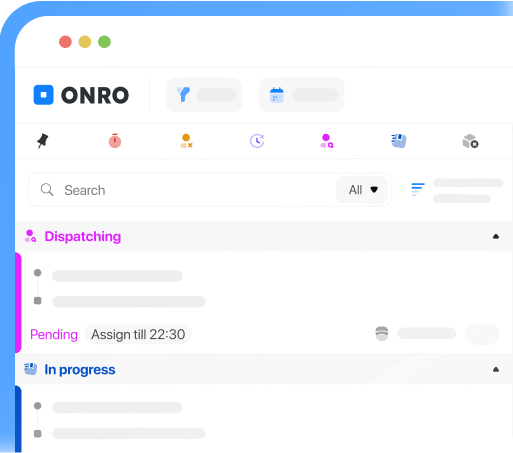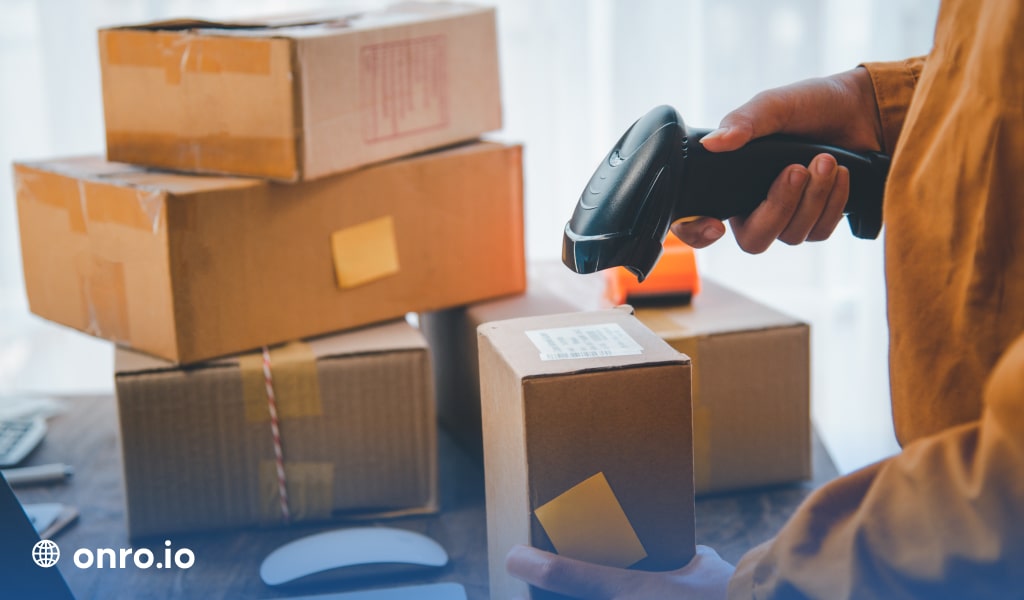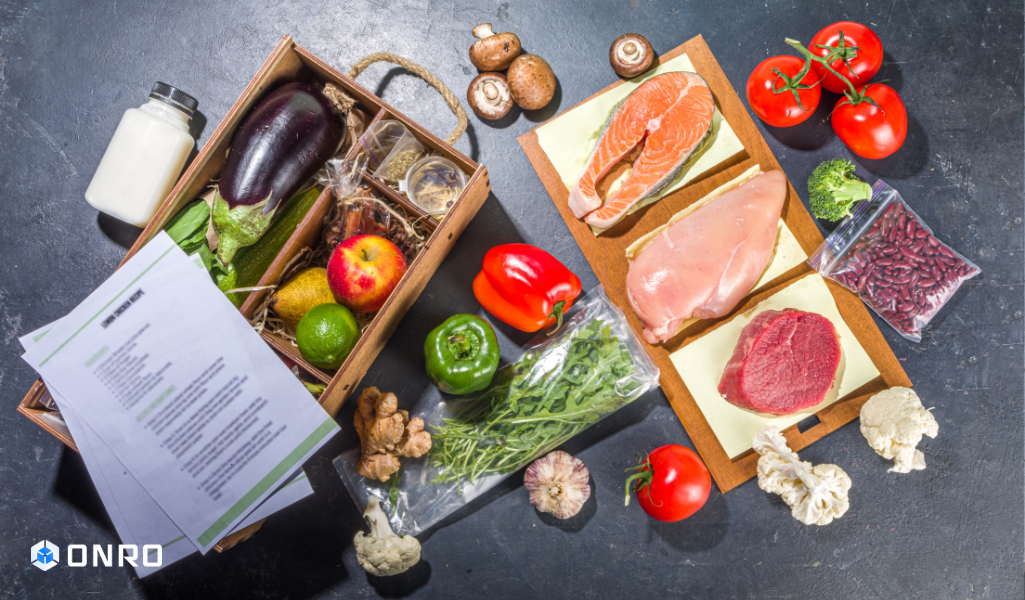Effective delivery management is essential for on-time, cost-effective shipping, as well as the satisfaction of the customer. Mastering the optimization of routes and schedules through automation of dispatch with a better delivery management software helps to reduce costs and ensure that products arrive in perfect condition. Find out about the important pillars for effective shipment management.
Try Onro for Free
Get your free access to the Onro All-in-one Delivery Management Software.
What is Delivery Management?
Delivery management is the logistics process of planning, organizing, and monitoring all the activities involved in the shipment of goods, especially that of the last mile. The last mile is the most critical step where goods are transported from their source to the consumer.
The purpose of delivery management is to ensure on-time deliveries. It should optimize all the processes to have the best practices about costs and logistics, clear communication with customers, and arrive product in perfect condition. We’ll explore these aspects in greater detail in the following sections.
7 Pillar Components of Effective Delivery Management
Efficient delivery process tools should integrate important pillars from order registration through arrival at its destination. All these streamline the workflow, ensuring that orders are delivered on time and in good condition. The following 7 pillars will be important components that delivery management systems should have in 2025.
1. Cost Optimization
There are factors that should be considered in managing the cost optimization in delivery management. These include transportation costs, inventory carrying costs, cost of packaging and materials, labor and operational costs, costs incurred for reverse logistics, investment in technology, and the impact of fluctuating market conditions.
The last-mile delivery has been the most expensive element of the supply chain, often accounting for 40-50% of total delivery costs. Thus, efficient management of deliveries can minimize costs while ensuring on time delivery in excellent condition.
If you know about tracking cost per delivery with an efficient system, you can understand whether your deliveries are profitable or facing losses. This metric is helpful for businesses that want to estimate whether the customer expectations for free delivery are realistic or not. Operational costs give you a clear picture of offering free deliveries without considering the underlying business costs.
2. Route Optimization (Route planning)
Do you struggle with the challenges of finding the most efficient routes? You should consider challenges like minimizing distance, travel time, and fuel consumption. Instead of manual route planning, you should rely on a delivery management system for route optimization!
Many companies still use applications such as Waze or Google Maps, but they are not equipped with advanced features like route optimization and geographic clustering of stops.
Route planning apps based on smart algorithms automatically create the shortest and most effective routes which transform the logistics process. This saves on fuel, improves driver productivity, and ensures timely deliveries. When integrated with your order management system, there is no need to enter delivery information manually, so it is easy to operate.
3. Driver Schedule
It has become necessary to schedule drivers effectively to create a seamless delivery process that guarantees the most efficient order fulfillment with careful logistics. It depends on your needs, you can hire Gig economy drivers (hourly), independent contractors, or in-house drivers if you have an effective driver schedule in your delivery system.
Optimize shift scheduling and route assignment through order cut-off times, balanced shift lengths, and management techniques for variable delivery demand. Advanced software can help automate such functions thereby simplifying and increasing efficiency in delivery operations.
4. Automated Dispatch
An efficient delivery business should involve real-time automation in all steps of the dispatch process. Unlike scheduled deliveries that rely on forward-looking route optimization, on-demand delivery should handle new order management as requests come in.
Businesses such as restaurants need to have route planning software to address that situation. It automatically assigns orders to nearby drivers. Programmatic order assignment has ensured timely deliveries. Timely delivery means successful delivery of the goods as expected or promised. It is the ensuring products reach the customer or recipient within the delivery window as specified, or at the scheduled time by which they are meant to be delivered.
Overall, automated dispatch gives flexibility to delivery managers to handle exceptions and maintain customer satisfaction, rather than wasting time coordinating driver allocation during an incoming wave of orders. Such integration will not only improve efficiency in operations, but it will lead to better customer experience and drivers alike with real-time route planning and order assignment.
5. Dispatch Management
Once you finish route planning and driver assignment, the next step is to ensure timely delivery. On the other hand, you should ensure that the right delivery loads are delivered to the right stops at the right time for all your drivers. This is usually done with old techniques, such as printing out a packing list and handing out a route plan to the driver. But through the apps, routes can automatically find their way onto the mobile phones of drivers, automating navigation along routes with apps like Waze or Google Maps for point-to-point navigation.
Spending hours on the road can often seem difficult, thus modern delivery management tools enhance the efficiency of delivery systems. With the help of a delivery app, route management is optimized while streamlining the entire delivery process, ensuring smooth operations and less stress for drivers and their overall delivery logistics and their on-the-road lives.
6. Team and Customer Communication
A customer who is stressed is usually unsatisfied. In e-commerce delivery management, this stress may arise from delivery uncertainty and the lack of communication during the delivery. Thus, it is important to provide real-time delivery updates to maintain transparency for customer satisfaction. Let your customers know about their deliveries when it is scheduled, when on the way, and when done.
Also, accessibility of communication is fundamental for the system. A driver calls the dispatcher whenever he or she has a challenge, either not being able to locate a drop-off point or the customers themselves. Hence, by the use of real-time tracking, dispatchers know where the driver is and what time he or she will probably reach the drop-off, thereby coordinating an efficient delivery process and fast-tracking possible delivery problems.
Even more, it makes sense that relying on manual updates quickly becomes an overwhelming task. So, automating the order tracking system and the delivery notification will be important. Customers will be informed of all the happenings through timely updates and proper communication with the rest, therefore reducing stress and increasing the level of trust. Even if there are any delays or problems, the customers will still be satisfied, as they would know they expected it through the delivery transparency. This strategy will lead to reducing customer complaints.
7. Proof of Delivery
Some packages need proof of delivery with a customer’s signature to confirm. With excellent delivery management, the companies can have contactless signatures and barcode scanning to deliver the right package to the right person. This proof of delivery maintains a chain of custody, which is very important in the case of sensitive deliveries such as pharmaceuticals. By integrating delivery tracking and order verification systems, companies can ensure that package deliveries are accurate and secure during delivery. These systems will make sure that packages contain the right signatures and are compliant, leading to reducing the loss of packages.
What is a Delivery Management System (DMS)?
A Delivery Management System (DMS) is a software solution that allows improving and streamlining the whole delivery chain. The DMS will enable you to estimate the time of arrival (ETA) more accurately and facilitate all stages of the delivery operations better. Alternatively, such a system can coordinate the entire process of delivery from starting to order placement to develop high customer satisfaction.
On the other hand, delivery systems conclude with logistics management software, which becomes very important. Most supply chain professionals can use this system to make processes more efficient. The system is pertinent for modern-day logistics optimization with features like enhancing operational effectiveness through real-time updates.
Why is Onro One of the Best Delivery Management Softwares in 2025?
Onro indeed has a lot of features to help optimize the delivery time, schedule a time, and release the driver from inefficiency. In the following, we will investigate and discuss Onro features.
1. Route Optimization
Onro optimizes routes for efficiency and satisfaction on the part of the driver. Our routes appear clean, with some overlap and crisscrossing. A flexible schedule, effortless stop reassignment, and real-time updates make the management delivery process easier for the support team.
2. Multiple Routes
Creating specified delivery routes implies that it should include all possible types of transport and routing evaluated according to specialized stop needs. This requires the capabilities of these delivery tools that will evaluate all of this data and provide different optimized routes to bring about flexibility.
3. Precise Time Windows
Delivery time windows are to be minimized to ensure that all customers receive a quality experience. As same-day and next-day delivery become more popular and expected, the ability to offer multiple delivery windows is often a struggle for online retailers. Onro offers an effective route and dispatch management solution that optimizes delivery schedules, increases customer satisfaction due to the timeliness of the deliveries, and meets very tight timeframes.
4. Easy Dispatch
Onro has increased communications, better routing, improved customer satisfaction, and timely delivery of services. Onro enhances driver and dispatcher efficiency, reduces costs, and lowers stress levels. So, you can send these routes to your drivers with a click.
5. A driver Application
Drivers should not struggle with clipboards or hefty tablets to keep everything organized. Currently, the best driver tracking tools also have smartphone apps installed so that drivers can manage their daytime from their mobile phones.
6. Automated Customer Delivery Notifications
Onro creates an aspect where you can simply set up automated messages informing your customers about their delivery Estimated Time of Arrival (ETA) and its completion. Including tracking links is an additional perk.
7. Real-time tracking
Real-time tracking makes things more accessible to logistics managers and shippers with respect to knowing critical information such as their conditions, location, etc. Onro includes sophisticated real-time tracking that satisfies the need to visualize the shipments at all stages and proves to present accurate and up-to-date compartmentalization tracking status to further streamline the delivery process.
So, your customer can see the status of deliveries in a blink. This live tracking also means that the drivers will not have to call or text for their progress report.
8. Delivery Tracking Links for Customers
Various edge features such as enabling customers to see their drivers in real-time as they approach their destination can make delivery easier with Onro. The lightweight and smart application of revealing a direct live tracking notification will definitely enhance customer experience while boosting transparency and ease at different stages of the delivery process.
9. Report Generation
Updating the customer’s delivery status in real-time with Onro’s will improve the delivery management system. You ensure that your customers are always kept in the loop, improving transparency and overall satisfaction. You can track delivery status, driver route management, and optimize delivery schedules with Onro.
10. Customer Support
Learning how to use Onro for the delivery service is the simplest thing to do. The user interface is simple and enables you to learn how to streamline operations, track deliveries in real-time, optimize routes, and manage driver performance in no time. Also, with the help of customer portal, your individual and B2B customers can consider their delivery instructions while placing their orders.
Conclusion
Therefore, cost optimization and customer communication create the backbone of effective delivery management. Such pillars include route optimization for efficient functions and effective satisfaction through real-time tracking. Onro is best-in-class delivery software that can change your business forever. Try it now for fully optimized deliveries!
Try Onro for Free
Get your free access to the Onro All-in-one Delivery Management Software.

Originally published May 30, 2023 7:51 am, updated Saturday, 30 November 2024.



